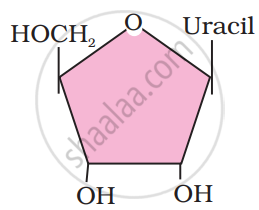Advertisements
Advertisements
प्रश्न
Can you attempt building models of biomolecules using commercially available atomic models (Ball and Stick models).
उत्तर
Yes, models of biomolecules can be prepared using commercially available atomic models.
- Three-dimensional (3D) or spatial molecular models, such as ball and stick and space filling models, are used to show the structure of chemical compounds and products, as well as biomolecules.
- The covalent bonds are represented by straight lines connecting the atoms' centres in ball and stick models.
- Springs that create curving connections between the balls are frequently used to symbolise double and triple bonds.
- The bond angles and bond lengths mirror the real relationships, but the space occupied by the atoms is either not shown at all or is only partially conveyed by the relative diameters of the spheres.
APPEARS IN
संबंधित प्रश्न
Explain the composition of triglyceride.
Attempt titrating an amino acid against a weak base and discover the number of dissociating ( ionizable ) functional groups in the amino acid.
Draw the structure of the amino acid, alanine.
The acid insoluble fraction does not contain
Identify the incorrect statement :
Triglyceride consists of ______.
Identify the structural formula given in the figure.

It is said that elemental composition of living organisms and that of inanimate objects (like earth’s crust) are similar in the sense that all the major elements are present in both. Then what would be the difference between these two groups? Choose a correct answer from among the following:
Many elements are found in living organisms either free or in the form of compounds. Which of the following is not found in living organisms?
Aminoacids, have both an amino group and a carboxyl group in their structure. Which one of the following is an amino acid?
An aminoacid under certain conditions have both positive and negative charges simultaneously in the same molecule. Such a form of aminoacid is called ______.
Write the name of anyone aminoacid, sugar, nucleotide and fatty acid.
Glycine and Alanine are different with respect to one substituent on the α-carbon. What are the other common substituent groups?
What is the difference between a nucleotide and nucleoside? Give two examples of each with their structure.
